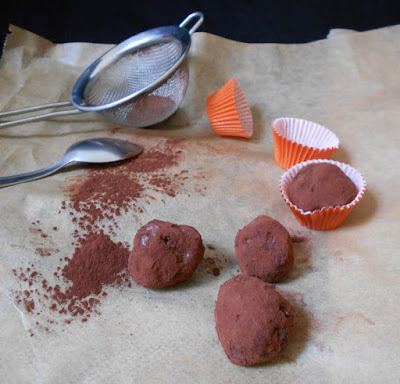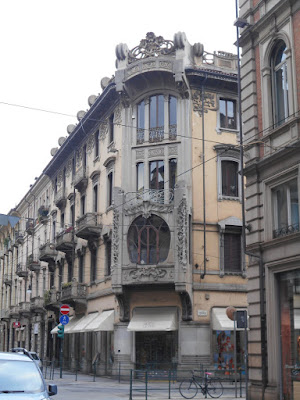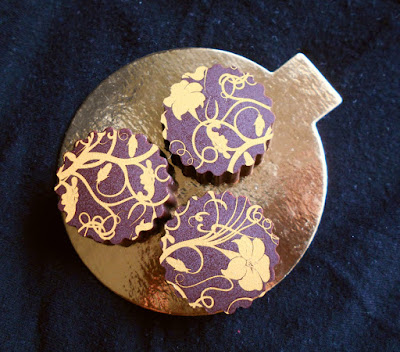Tavasszal, ahogy az első napsugarak megolvasztják a havat és az utakat fedő jeget, a víz utat talál a föld alá. Apró patakokban csordogál a hótakaró alatt lepréselődött, őszről maradt avar, majd az alvó növények cérnavékony és a fák vastagabb gyökerei között. Addig-addig csordogál, míg egészen átnedvesíti a földet, elér a mélyebb rétegekhez, a felszínen pedig nem marad már se hó, se jég.
Ekkor ébrednek fel téli álmukból a föld alatt élő tündérek és apró manók, hogy nekilássanak sürgető tavaszi teendőiknek. Előbb előbújnak kéreg alól, gyökerek közé vájt odúkból, kavicsok alól, ahol a hideg hónapokban szunnyadtak, kis csapatokba verődve köröket alkotnak, és reggeli tornával megmozgatják elgémberedett tagjaikat. Tócsában, olvadó jégcsap hegyén csüngő cseppekben megmosakodnak, aztán ki-ki irány a dolgára!
Az egyik a fák gyökereit masszírozza, hogy meginduljon bennük a lusta keringés. Egy másik a bokrok tövében kószál, egyesével rázza meg őket, hogy a hósipka alatt elmacskásodott ágak a fény felé forduljanak. Végül a legkisebb manócska kis ezüstsíppal a virágok és füvek gyökereihez kúszik, és addig játssza a legkedvesebb tavaszi dalokat, míg az összes növény fel nem éled.
Hanem közben a tündéreknek fontos feladatot kell ellátniuk: a tél elején félretett, mókus által elrejtett, madarak által elfelejtett, félig kikelt magokat veszik gondjukba, dédelgetik, itatják őket, míg meg nem duzzadnak, és ki nem pattan belőlük a csíra. A tündérek dolga, hogy eligazgassák a sötétben mocorgó, nyúlkáló zöld nyelveket a fény felé. Nem egyszerű munka ez, mert az apró növénykezdeményeknek göröngy és kavics között kell megtalálniuk az utat. De az időközben felszívott víz és tápanyagok erőssé teszik a csírákat, előbb-utóbb kibukkannak a felszínre, a melengető napfényben megnyúlnak, megerősödnek.
Manók vigyázzák a gallyak csúcsán megjelenő pókhálós rügyeket, az első kibomló leveleket. Tavaszi eső paskolja a növényeket, bogarak zümmögik körbe őket, pezseg az élet minden gyökérben, szárban, ágban. Sarjak aranyzöldjébe, nedves kérgek feketéjébe öltözik a világ. A természet manói és tündérei addig szorgoskodnak, míg magabiztossá erősödik az utolsó, árnyékban-hófoltban megbújó fűszál is. Féltőn óvják a zsenge szárakat, és amikor kifeslenek a tavaszi vadvirágok, vidáman hintáznak a kelyheikben.
In spring, when the first rays of the sun melt the snow and the ice covering the streets, the water finds its way underground. In tiny streams, it trickles through the withered leafs left over from autumn, then among the thin roots of the plants and the thicker roots of the trees. It trickles until it soaks through the earth, reaches deeper layers, and neither snow, nor ice remains on the surface.
Then the fairies and tiny sprites living underground wake up from their winter dream to set about their urgent spring business. First, they crawl out from under barks and stones, from dens dug beneath roots, where they were sleeping during the cold months; in small groups they form circles and move their numb muscles with morning exercises. They wash themselves in puddles or drops hanging from the tip of icicles, then everyone goes about their business!
One massages the roots of trees in order to get the lazy circulation going. Another one wanders under the bushes; shakes them one by one so the sprigs, which went numb under the snow, turn towards the light. Finally, with a small silver pipe in hand, the smallest sprite creeps to the roots of the flowers and grass, and plays the gentlest spring songs until all plants wake up.
In the meanwhile the fairies must attend to an important task: they take care of sprouting seeds, which were put away in the beginning of winter, hidden by squirrels, forgotten by birds. They pamper them and feed them until the seeds swell and the sprouts bust. The green leafs stirring, stretching in the dark have to be orientated by the fairies towards the sun. It is not an easy job, because the tiny plants must find their way among clods and pebbles. But the water and nutrients they have absorbed make them strong; sooner or later they reach the surface; they stretch and strengthen in the warm sunshine.
Sprites take care of the cobwebbed buds, the first unfolding leafs appearing on the tip of boughs. Spring rain pats the plants; bugs buzz around them; life sparkles in every root, stem, branch. The world is donned in the golden-green of sprouts and black of wet barks. The sprites and fairies of nature busy themselves until the last blade of grass hiding in shadow and snow gets confidently strong. They take care of delicate stems and when spring flowers bloom, they cheerfully swing in their chalices.
A természet manóiról szóló mesét még annak idején anyukám találta ki és mesélte nekünk, így a szerzői jog az övé, bár azt nem garantálhatom, hogy épp így hangzott el ez a mese annak idején :) A csokimaszk tavaszi motívumainak egy részét Johanna Basford színezőkönyveinek rajzai ihlették.
Hozzávalók:
150 gr fehércsoki
30 gr étcsoki
kakaóvaj, ételszínezék, lüszterpor
Elkészítés:
Érdemes jó előre kitalálni, milyen mintát festünk majd, hogy ne akkor keresgéljünk, amikor kész a temperált csoki. A referenciát az asztalra készítem vattapálcával, ecsettel együtt. Temperálom az étcsokit. Vékony ecsettel megrajzolom a mintát a maszk belsejében, a pontatlan vonalakat vattapálcával korrigálom. Ezután jöhet a színezés: egységes színeket alkalmazok - ez esetben zöldek és rózsaszínek voltak hangsúlyosak. Kétféle zöldet, sötétkéket, vöröset és rózsaszínt használtam a mintához, ezeket vegyítettem különböző árnyalatokká, és próbáltam egybemosni őket, hasonlóan ahhoz, mint amikor színezek. Ezen még majd dolgozni kell, mert nem mindenhol sikerült úgy, ahogy akartam. Ennek ellenére azért elégedett vagyok a végeredménnyel, úgy fest, mint egy porcelánmaszk :)
Végül temperáltam a fehércsokit, a formába öntöttem és többször körbeforgattam, hogy a szélekre is jusson. A maradékot kiráztam, és lekapargattam a forma peremét. A hűtőbe tettem a formát.
Miután a maszk megszilárdult, kipottyant a formából. Gyertyaláng felett hevített késsel elegyengettem a széleket ott, ahol szükséges volt.
The tale about the sprites of nature was found and told to us out by my mum, therefore she owns the copyright. However, I cannot guarantee that this specific tale was exactly the same at that time :) Some of the spring motifs of the chocolate mask were inspired by the colouring books of Johanna Basford.
Ingredients:
150 gr white chocolate
30 gr dark chocolate
cocoa butter, food paint, lustre dust
How to prepare:
It makes sense to find out the pattern in advance so you won't have to search when the tempered chocolate is ready. The reference, cotton buds and the brush shall be prepared on the table. I temper the dark chocolate. With a thin brush I draw the pattern into the mask; I correct the inaccurate lines with a cotton bud. Then comes the colouring: I apply selected colours - this time greens and pinks were stressed. I used two types of green, dark blue, red and pink; I also mixed them to get various shades and I tried to blend them, similarly to when I colour with pencils. I'll still have to work on this because I didn't succeed everywhere. However, I'm still satisfied with the result, it looks like a porcelain mask :)
Finally I temper the white chocolate, I pour it in the mould and rotate it around so that it covers the edges. I pour out the excess and scrape off the brim. I put the mould in the fridge.
After the mask gets dry, it falls out of the mould. With a knife heated above candle light, I straighten the edges where necessary.



































